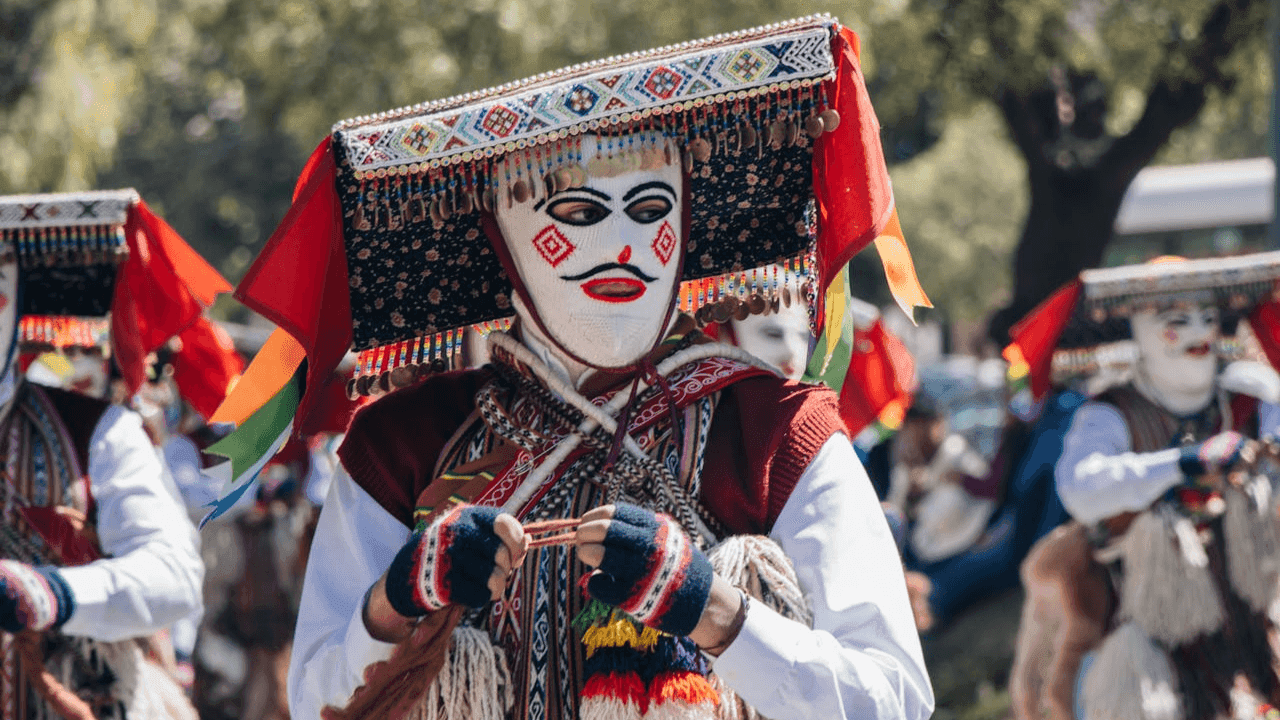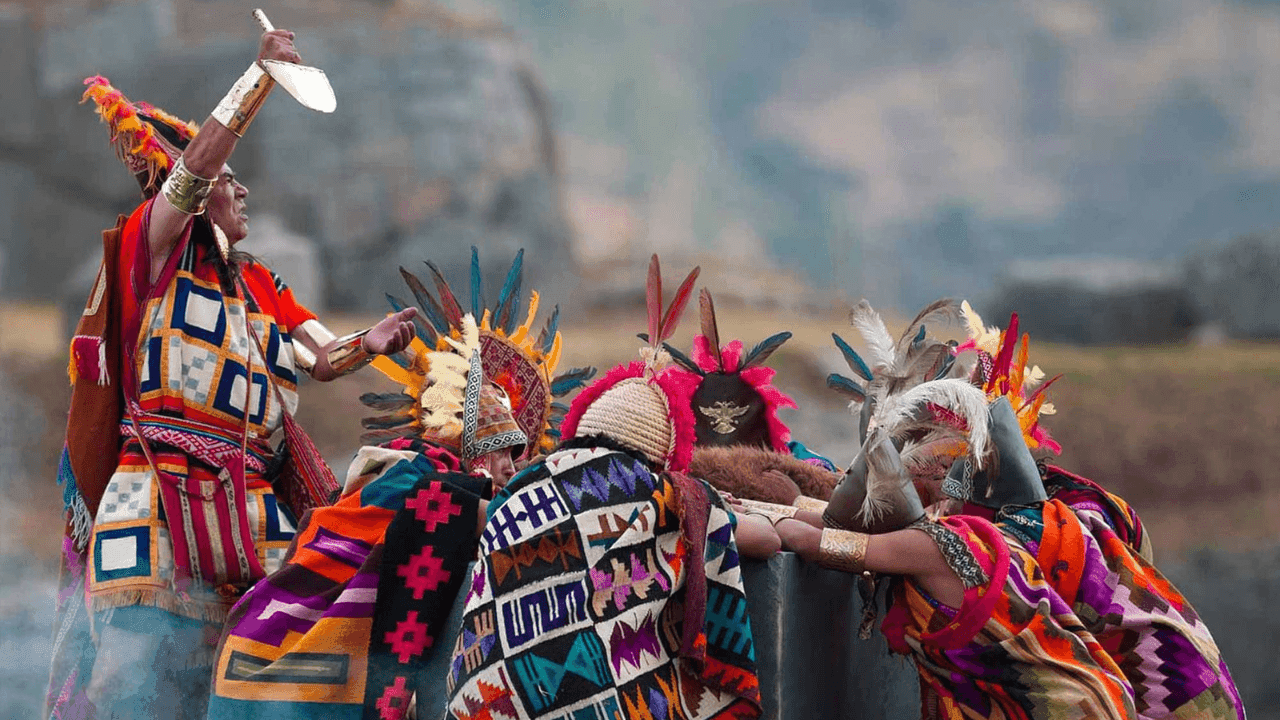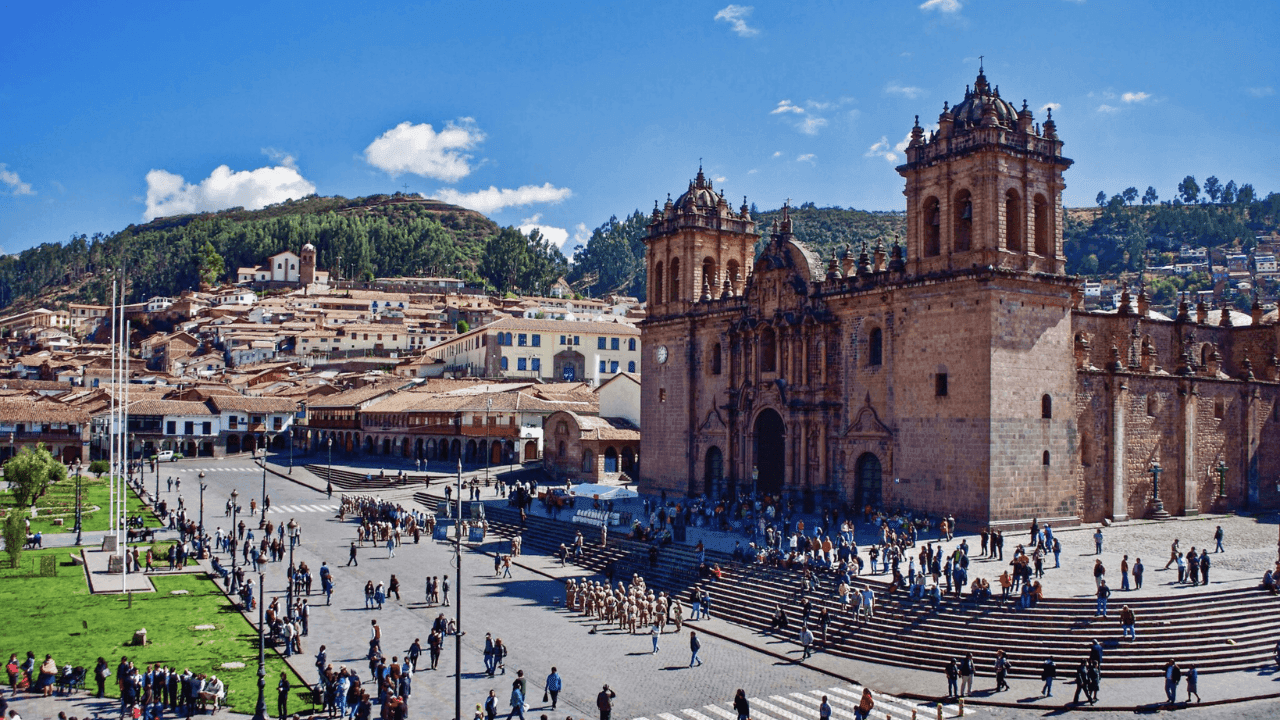
Tradition and Techniques
Weaving in Cusco is not just an art form but a vital practice for Andean communities. Textiles are created with techniques that have been perfected over centuries. Artisans use traditional methods like the backstrap loom and the vertical loom to create intricate pieces of art. Wool from alpacas, sheep, or vicuñas is dyed with natural dyes extracted from plants and minerals, resulting in a palette of vibrant and enduring colors.
Designs and Symbols
Each design in Cusco textiles carries a deep meaning. Geometric patterns and symbols represent important aspects of Andean cosmology, such as the connection to nature, deities, and daily life. For instance, the kuychi (rainbow) designs symbolize the connection between the sky and the earth, while chakana (Andean cross) patterns represent the structure of the universe.
Textile Art Today
Today, Cusco’s textile art remains an integral part of the region’s cultural identity. Many artisans and local communities continue to practice these traditional techniques while adapting their designs for the modern market. Cusqueñan textiles not only beautify daily life but also serve as a means to preserve and promote the rich cultural heritage of the region.
Visiting Cusco and Textile Art
For visitors to Cusco, there are many opportunities to experience textile art firsthand. Local markets such as San Pedro and Pisac offer a variety of handcrafted textiles. Additionally, workshops and exhibitions allow tourists to learn about the production process and the history behind each piece.
Other articles you might like

Traditional Festivals in Cusco
Cusco, the ancient capital of the Inca Empire, is not only famous for its impressive architecture and archaeological sites but also for its vibrant traditional festivals. These celebrations reflect the rich cultural and spiritual heritage of the Andean region, blending ancient Inca traditions with Spanish colonial influences. Below, we explore some of the most prominent festivals that make Cusco a unique place to experience Peruvian culture.

Haku Travel
Sep 13, 2024

Legends and Myths of Cusco: The Ancestral Magic of the Inca Capital
Cusco, the ancient capital of the Inca Empire, is renowned not only for its impressive architecture and archaeological sites but also for a rich tapestry of legends and myths that have been passed down through the centuries. These stories captivate visitors and provide a fascinating window into the Andean worldview and the cultural wealth of this magical region. In this first article, we’ll explore some of the most intriguing legends surrounding Cusco.

Haku Travel
Sep 13, 2024

Cusco: The Capital of the Inca Empire and Its Historical Legacy
Cusco, a city nestled in the heart of the Peruvian Andes, is much more than just a tourist destination. This city was the epicenter of the powerful Inca Empire, known as the Tahuantinsuyo, which extended across much of South America. Today, walking through the streets of Cusco feels like stepping back in time to an era when it was the political, religious, and cultural center of one of the most impressive pre-Columbian empires in history.

Haku Travel
Sep 13, 2024
Discover the world with our travel agency. From planning to the experience itself, we're here to make every journey exceptional.
Contact Us
- +51 984259412
- info@hakutravel.com
